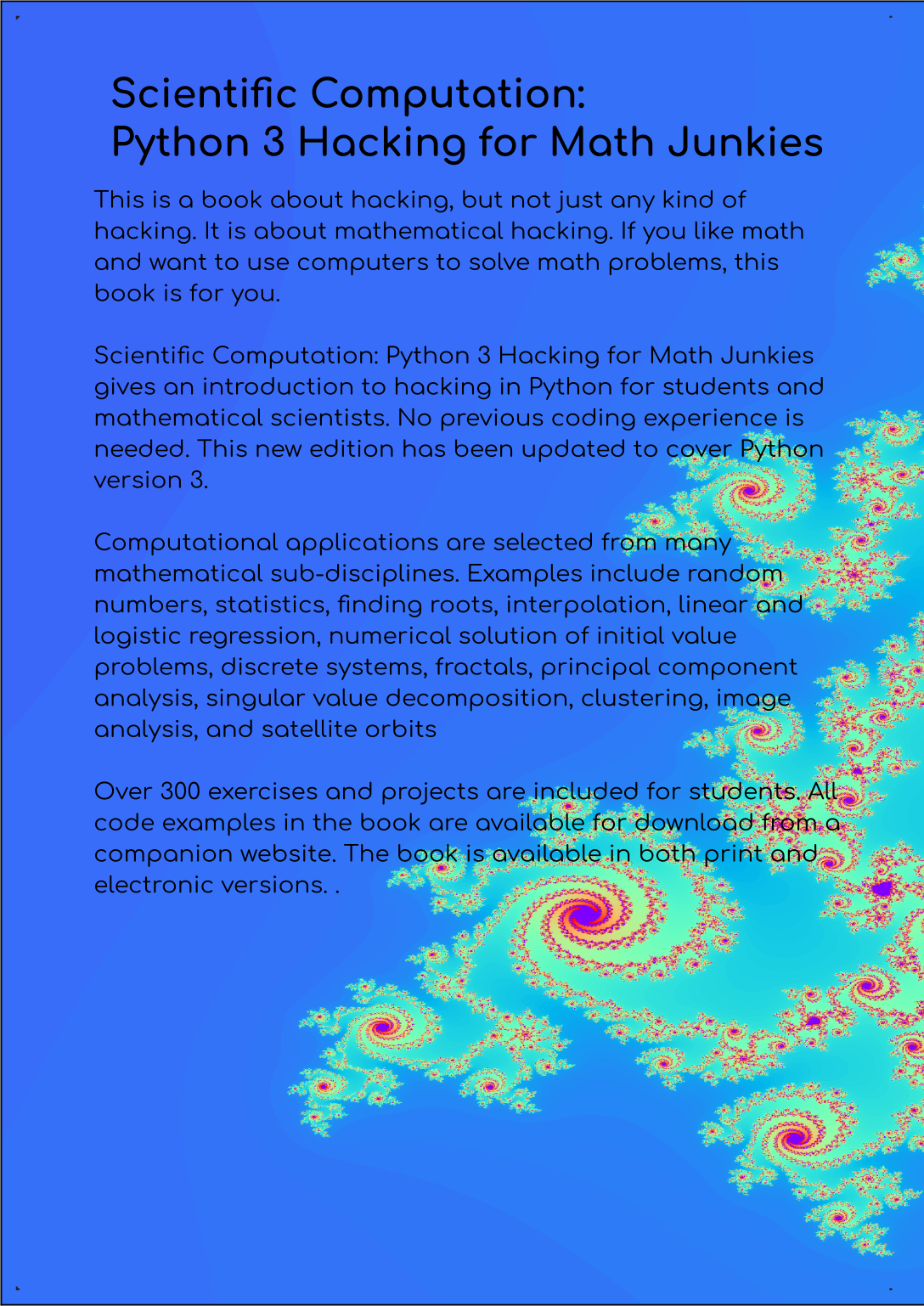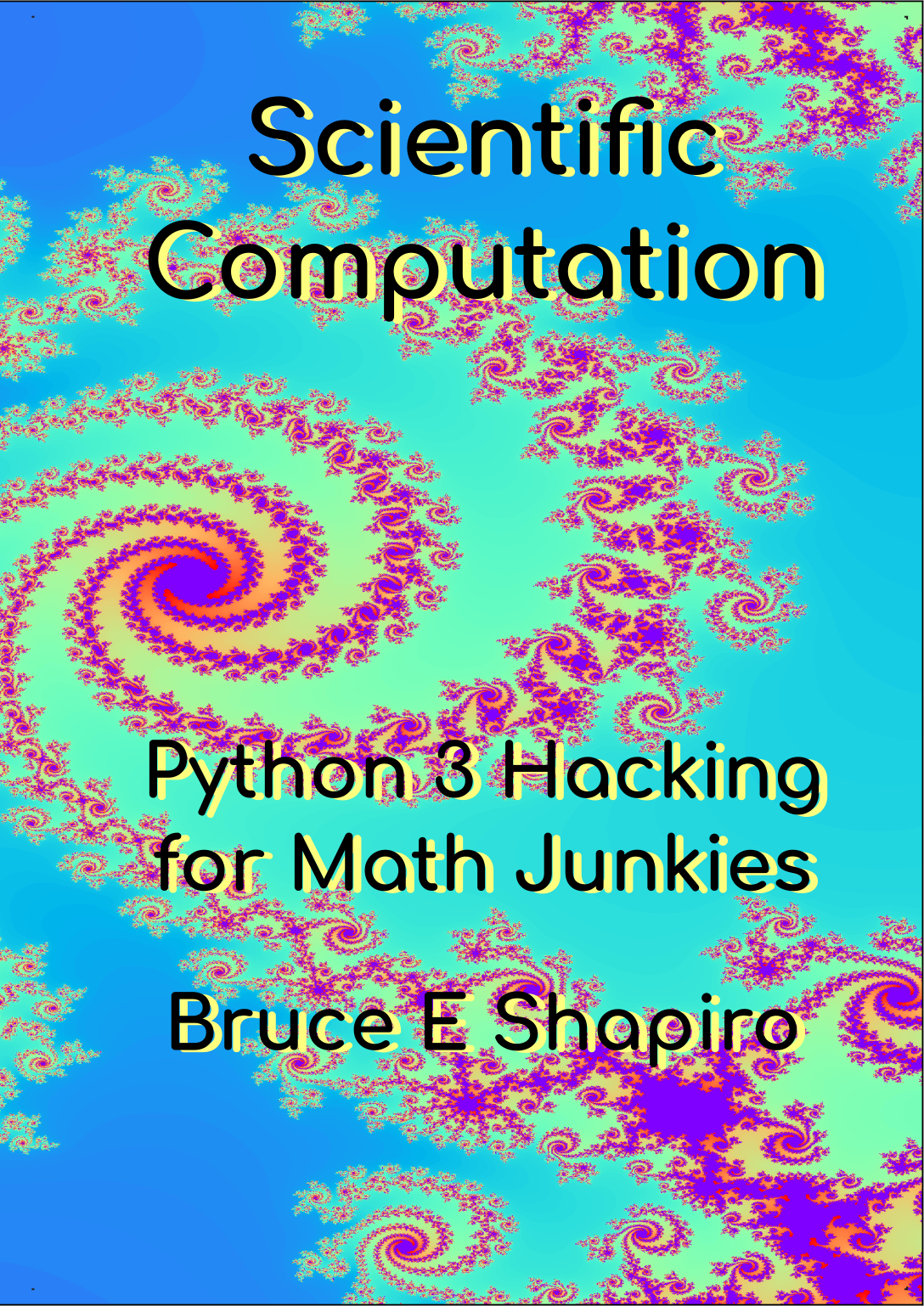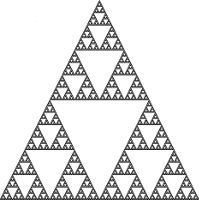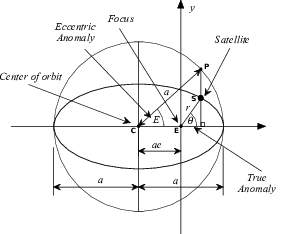Scientific Computation:
Python 3 Hacking for Math Junkies
4th Edition, Covering Python Version Version 3.x and Jupyter


About the 4th Edition
ISBN-13 978-1725894662ISBN-10 1725894661
This is a book about hacking, but not just any kind of hacking.
It is about mathematical hacking, or scientific computing.
If you like math and want to use computers to do math or solve
mathematical problems, then this book is for you. Over 70 pages have been
added and the text has been considerably revised throughout. The focus is on hacking in Jupyter notebooks. All code
is in Python version 3. All examples given in the book are provided in the
accompanying github website as juptyer notebooks.
Part I: Getting StartedList of Tables (New in 3)1. Programs and Programming 2. A Tour of Python 3. The Babylonian Algorithm 4. The Python Shell 5. The iPython Shell (New in 3) 6. iPython Notebooks 7. Numbers in Computers 8. When Numbers Fail 9. Big Oh |
Part II Hacking in Python10. Identifiers, Expressions & Types11. Simple Statements 12. Conditional Statements 13. While Loops 14. Sequential Data Types 15. Lists and Tuples 16. Strings 17. Sets 18. For Loops 19. Python Functions 20. Sorting 21. List Comprehension 22. Numpy Arrays 23. Plotting with pyplot 24. Input and Output 25. Dictionaries 26. Recursion 27. Lambda Functions 28. Exceptions 29. Functional Programming 30. Classes (Expanded in 3) |
Part III: Scientific Computing31. Random Variables (New in 3)32. Statistics (New in 3) 33. Linear Systems 34. Computational Geometry 35. Interpolation 36. Finding Zeros (Roots) 37. Least Squares 38. Nonlinear Regression (NEW IN 2.5) 39. Differential Equations 40. Discrete Systems 41. Fractals 42. Estimating pi 43. Sing. Value Decomp. (SVD) 44. Princ. Comp. Anal. (PCA) 45. Clustering (NEW IN 2.5) 46. Image Analysis 47. Satellite orbits 48. Maps with Basemap AppendicesA. Complex NumbersB. Vectors and Matrices Index |

Don't waste your money
on expensive calculus books.
If you feel a compulsive need to throw your money away, give it to me
instead.






